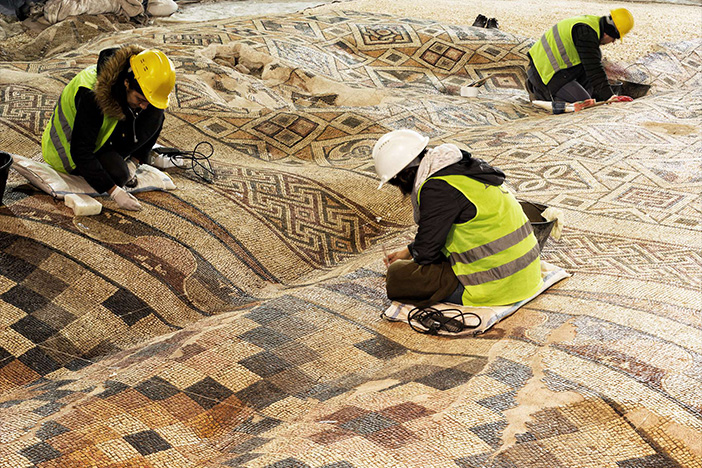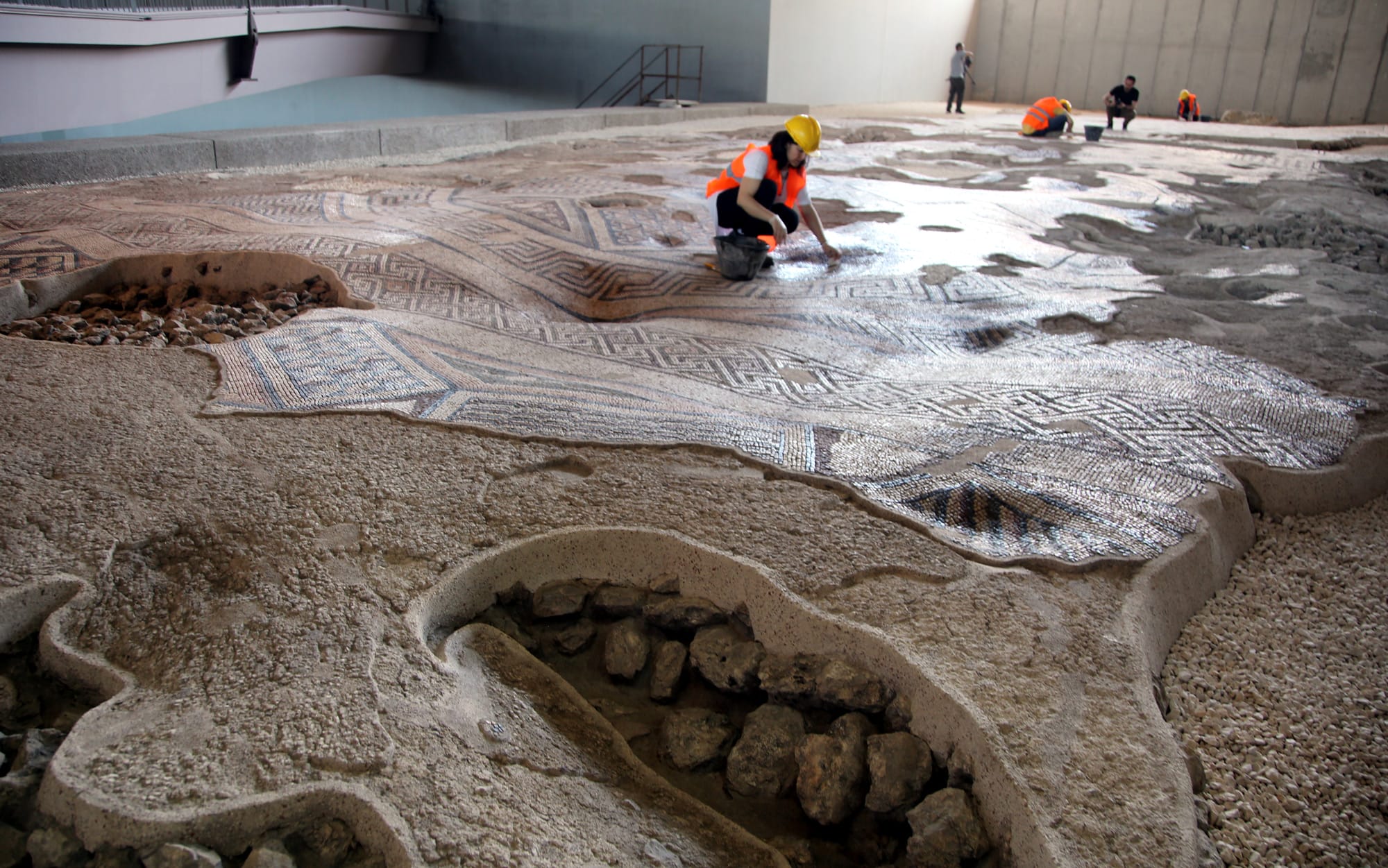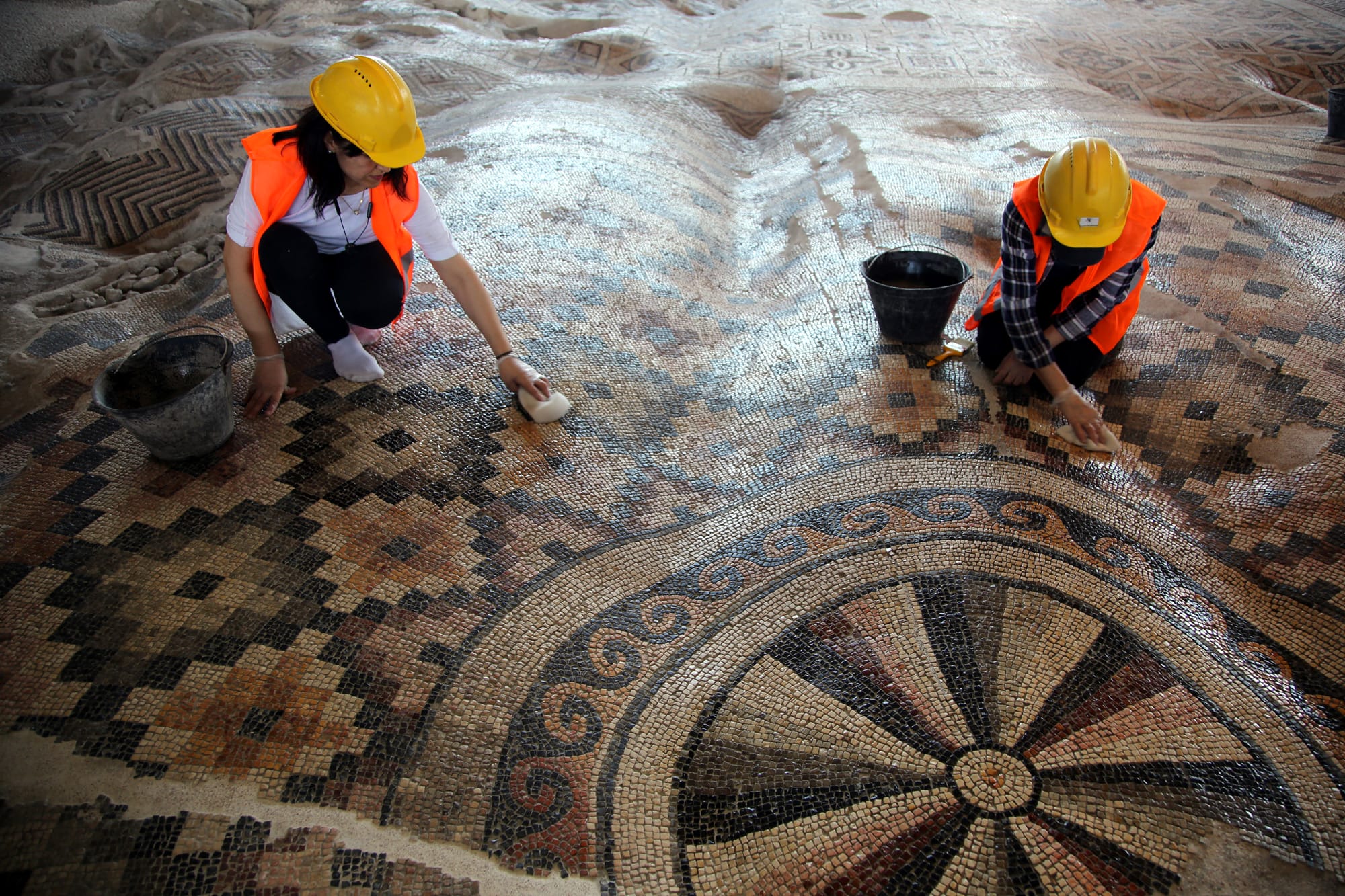A Remarkable Discovery in Antakya
In 2014, during the construction of a hotel in Antakya, Turkey, archaeologists stumbled upon a magnificent treasure buried beneath the soil: one of the largest Roman mosaic floors ever discovered. This monumental find dates back to the Roman period and is adorned with intricate geometric designs and vibrant patterns, highlighting the exceptional craftsmanship of the era.

Antakya, historically known as Antioch, was one of the most prominent cities of the Roman Empire, renowned for its cultural and economic significance. This mosaic, therefore, serves not only as a piece of art but as a historical record, offering a window into the artistic and architectural brilliance that once flourished in this region.
The Unique Rippled Effect: Nature Meets Art
What truly sets this mosaic apart is the unusual rippled effect that stretches across its surface, captivating both archaeologists and the public alike. Over the centuries, the earth beneath the mosaic shifted, and frequent earthquakes in the region caused the ground to buckle and warp. The result is an impressive, wave-like distortion that gives the mosaic the appearance of a giant, rippling blanket.

This natural warping has made the mosaic even more fascinating, as it represents the unintended beauty created by the interplay between human-made art and geological forces. The ripple effect adds a dynamic, almost fluid quality to the otherwise rigid floor, turning the ancient artwork into a testament to the enduring influence of natural processes on historical structures.
Preserving History Amid Nature’s Forces
Despite the warping caused by centuries of earthquakes and shifting soil, the Antakya mosaic has remained remarkably well-preserved. The colors are still vibrant, and the intricate designs remain intact, showcasing the durability of Roman craftsmanship. The mosaic’s survival against the odds is a striking reminder of how ancient structures can endure, even when subjected to the forces of nature.

The preservation of this mosaic is also a testament to the meticulous work of the archaeologists and conservators who have ensured that this masterpiece can be appreciated for generations to come. The discovery sheds light on how Roman engineers and artisans not only built for beauty but also for longevity, ensuring their creations could withstand the test of time.
A Glimpse into Roman Life and Culture
The Antakya mosaic provides more than just aesthetic pleasure; it offers valuable insights into Roman life and culture in ancient Antioch. Mosaics were often used in public spaces, villas, and baths, reflecting the importance of art in Roman society. The intricate designs and patterns of this mosaic suggest it may have once adorned an elite building or a public gathering place, making it a symbol of the affluence and cultural vibrancy of the time.
Through this mosaic, modern viewers can glimpse the artistic tastes of ancient Romans, who favored geometric patterns, floral motifs, and vibrant color schemes. Its large scale and exquisite details underscore the importance of artistic expression in public and private life during the Roman period.
A Testament to the Interplay Between Human Art and Nature
The rippled Roman mosaic of Antakya stands as a powerful symbol of the interplay between human artistry and nature’s unpredictable forces. Over the centuries, the ground beneath this masterpiece shifted, yet the mosaic remains, its beauty only enhanced by the natural waves that now ripple across its surface. This unique phenomenon reminds us that history is not only shaped by human hands but also by the natural world.

The mosaic’s survival through earthquakes and soil shifts is a tribute to the resilience of ancient art and architecture. It also speaks to the deep connection between human creativity and the environment, illustrating how nature can leave its mark on even the most carefully crafted human creations.
Conclusion: A Treasure Frozen in Time
Today, the rippled Roman mosaic of Antakya offers a rare and fascinating glimpse into the artistic achievements of the Roman Empire, as well as the enduring impact of nature on historical treasures. Its wave-like distortion, caused by centuries of geological activity, has transformed it into a dynamic piece of history—an artwork shaped not only by ancient artisans but by the shifting earth itself.
This mosaic is not just a relic of the past; it is a living testament to the resilience of human creativity, the power of nature, and the beauty that emerges when the two come together. It stands as a reminder that the history we uncover is often as much a product of the natural world as it is of the civilizations that came before us.

